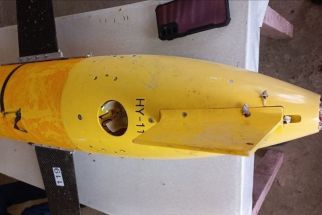Typhoon Haiyan in Phl: Pushing the envelope
This familiar phrase was employed by a weather specialist of CNN, the international news network, while it monitored Typhoon Haiyan (known as Yolanda in the Philippines) as the latter tore its way through the central Visayas on Nov. 8, 2013, wreaking untold havoc. It was clear that the international community of meteorologists and other scientists were fascinated, if not stunned, by the sheer power of this natural phenomenon as it unleashed its fury on our hapless country. The CNN broadcaster speculated that the typhoon was “pushing the envelope†as far as its strength was concerned, exceeding wind speeds of 300 kilometers per hour (kph) which did not at all diminish when it made landfall. The same presentor went on to suggest that it “defied the laws of physics.â€
I used these words in my text message the following day to Chancellor Caesar Saloma of the University of the Philippines at Diliman when I expressed sympathy for his family on the island of Bohol (which lay in the path of the storm and which, just a few weeks previously, had suffered a magnitude 7 earthquake). Professor Saloma is a renowned physicist, one of the best in the country. He graciously acknowledged my message but did not comment on the physics part. A few minutes later, I sent him another SMS where I wondered about the effects on the country and the rest of the world, now that major socio-economic centers in the Visayas have been devastated, the city of Tacloban alone having been practically wiped out. Caesar Saloma is also a specialist in the field of complex systems, and the aforementioned centers in islands such as Samar, Leyte, Negros, Panay and Palawan could be considered crucial nodes. What would the implication be on the viability of the Philippines as a system if these nodes were depleted, inactivated or removed altogether?
Typhoon Haiyan and its impact on the Philippines presents — simply put — a new dimension. There are no words to describe the ferocity it manifested, and the scale of destruction and human suffering it left behind.
Though it would seem unkind to shine a critical light on the Philippine government at this point, a scientist must be objective, and seek to tell the truth at all times. Philippine society has been criticized as largely dysfunctional, even during times when there are no catastrophes. This can be attested to by those who have had to deal with regular government offices for routine matters such as paying taxes, or renewing one’s passport or driver’s license. This is an important reason why many citizens have opted to emigrate to other countries (including possibly readers of this editorial!). How can such a society be expected to deal with a cataclysm of this magnitude?
It is also no secret that various elements of government have systematically siphoned off funds meant for public services such as education, healthcare and vital infrastructure. This corruption has been going on for decades, if not generations, as observed publicly by a well-respected news anchor of CNN itself. One of the entities most notorious for its systemic corruption is the Armed Forces of the Philippines. Is it any wonder that the response from them was dismal, to say the least, at the time of greatest need, in the aftermath of the typhoon?
For the millions of Filipinos affected to varying degrees by this natural-cum-human catastrophe, their perception of reality is surely altered in a fundamental way. How many of us will now go to bed each night no longer feeling safe, anxious that the next tragedy may strike any moment? To what extent will this view of life affect the ability to work, to be creative and productive citizens? What impact will there be on social cohesion, economic progress?
The task confronting science now is enormous. Thankfully, there is always a positive note, namely, that the challenges cannot be insurmountable. In addition to the social issues mentioned above, research efforts must be ramped up to understand this new phenomenon — hurricanes that are now exceeding historical maxima. What is the interaction between ocean and atmosphere that generates these forces, and to what extent does the human influence on climate play a role? But understanding, then attempting to predict, the behavior of the natural system is the fun part. The grim reality that remains is the effects of natural disasters on human society. Again, tackling this falls within the purview of science — disaster prevention, disaster mitigation, and adaptation. Interestingly, the elements of the solutions that will invariably present themselves will play along the same, familiar themes: controlling human population growth; enforcing strict zoning regulations that prohibit construction of permanent infrastructure in vulnerable locations such as exposed coastal areas, river banks and river mouths, and steep slopes that are prone to landslides. One particularly new challenge did occur to me, though, and which I mentioned to my students: it’s for the architects and civil engineers. How do you now design structures that would withstand 300-and-above kph winds extending tens, if not hundreds, of kilometers in diameter — something that appears to be entirely new to the human experience, and may very well be a recurring phenomenon, not just in our region, but in other parts of the world?
* * *
This article was first published as an editorial in the scientific journal Philippine Science Letters (www.philsciletters.org) last Nov. 19.
* * *
Helen T. Yap is a professor at the Marine Science Institute, University of the Philippines, Diliman. Her interests include coral reef ecology and complex systems. She was cited recently by Thomson Reuters as among the most published and cited researchers of the University of the Philippines. She is also a TOWNS (The Outstanding Women in the Nation’s Service) awardee.
- Latest




























